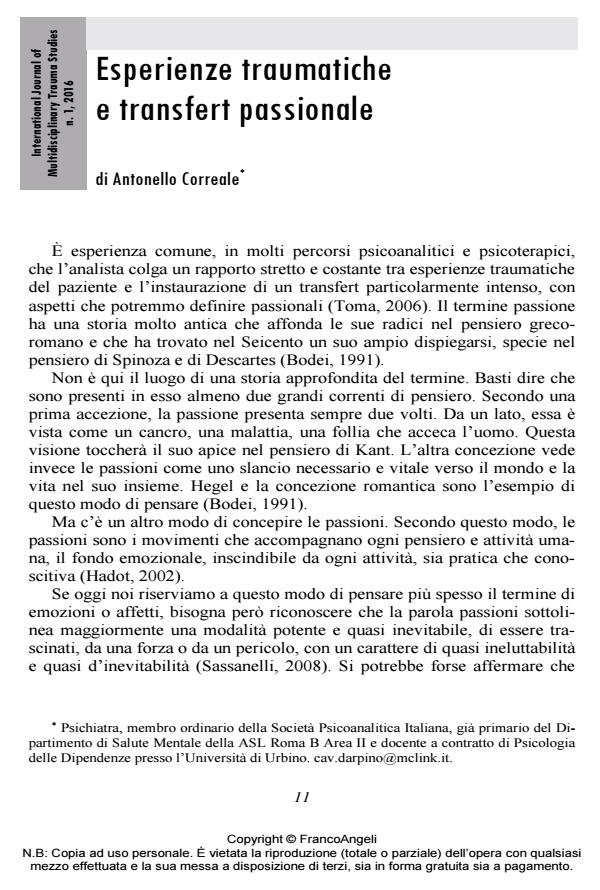Traumatic experiences and passionate transfert
Journal title INTERNATIONAL JOURNAL OF MULTIDISCIPLINARY TRAUMA STUDIES
Author/s Antonello Correale
Publishing Year 2016 Issue 2016/1
Language Italian Pages 13 P. 11-23 File size 190 KB
DOI 10.3280/IJM2016-001002
DOI is like a bar code for intellectual property: to have more infomation
click here
Below, you can see the article first page
If you want to buy this article in PDF format, you can do it, following the instructions to buy download credits

FrancoAngeli is member of Publishers International Linking Association, Inc (PILA), a not-for-profit association which run the CrossRef service enabling links to and from online scholarly content.
The passion always has two faces, that of blinding insanity or that represented by the vital impetus to the world with a common denominator represented by the timelessness revealing the loss of the usual space-time coordinates. From this dual totality and inevitability affectiveness, the Author proposes a reflection on a particular mode of transfer, passionate indeed, in constant relationship with the post traumatic experiences and described by a particular intensity. The paper examines the theme of passion within post-traumatic transfer characterized by a particular investment on the figure of the analyst aspects which are stratified idealized, eroticized and hostile, being more or less explicit and apparently confused. What distinguishes the transfer quality of this resonance is an evolutionary and integrative valence that, compared to other types of transfer (psychotic or hysterical), may orienting the care throughout all passionate emotions.
Keywords: Trauma, transfer, dissociation, passionate transfer.
Antonello Correale, Esperienze traumatiche e transfert passionale in "INTERNATIONAL JOURNAL OF MULTIDISCIPLINARY TRAUMA STUDIES" 1/2016, pp 11-23, DOI: 10.3280/IJM2016-001002